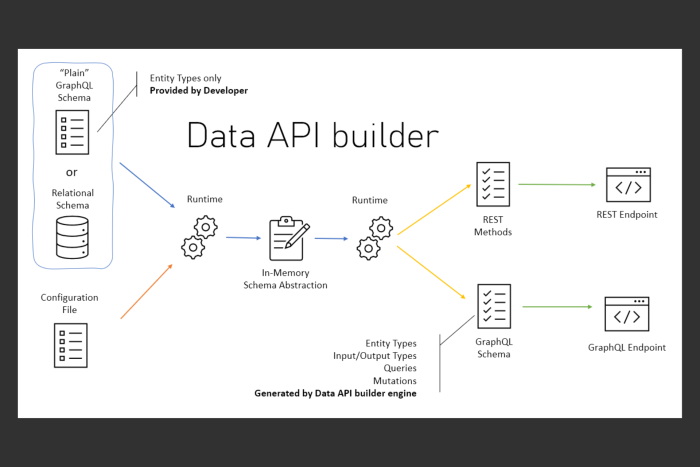Microsoft's Data API builder for Azure Databases is now generally available, bringing easier database interaction
Interacting with Azure databases becomes a lot easier and faster
3 min. read
Published on
Read our disclosure page to find out how can you help Windows Report sustain the editorial team. Read more

The Data API builder has been in the works for nearly 3 years. The tool is aimed at reducing the friction developers face when accessing databases in their client applications. Fast forward to today, Microsoft announced the general availability of Data API builder (DAB) for Azure.
In broader lines, this tool offers developers a secure, feature-rich way to create REST and GraphQL endpoints over databases without writing a single line of code. And best of all, it’s open-source and free, even for on-prem databases.
Here are some details about Data API builder
The architecture behind it is a dynamic, container-based, configuration-driven runtime. It’s an ASP.NET project crafted in C# and available under the MIT license. The use of ChilliCream’s Hot Chocolate for GraphQL and FusionCache for in-memory caching, among other libraries, makes it a robust solution for API projects. DAB offers REST endpoints with native OpenAPI support and Swagger for developers, ensuring easy access and interaction. It doesn’t stop there; GraphQL endpoints come with automatic schema generation, making it extremely flexible for various solutions.
Whether you’re aiming to expose a data clearinghouse, enable a mobile application, or simply tinker with an Azure database, DAB has got your back. It supports multiple backend stores and databases, making it a pretty good choice for many in the tech community. The container-based approach of DAB means it’s Docker-friendly, stateless, and scalable, fitting perfectly in any environment, cloud or on-prem.
For enterprises, DAB offers features like Microsoft Entra Identity integration and Application Insights, along with CI/CD support. And for those leveraging Azure, DAB integrates seamlessly with Azure Static Web Apps, Azure Container Apps, and more, offering a cutting-edge solution for database and front-end application integration.
The feature-rich nature of DAB means every endpoint comes with a retry policy, comprehensive logging, in-memory cache, and solid documentation. It simplifies the engineering process, reducing codebases, eliminating suites of tests, and shortening CI/CD pipelines. Rapid development is another highlight, with developers able to create APIs in hours and amend endpoints in minutes, leading to significant time and carbon savings during the development process.
Being open source means collaboration and transparency. The Data API builder team encourages feedback and contributions, hosting monthly community standups and managing discussions on GitHub. Their comprehensive documentation and CLI tools make getting started a breeze, enabling developers to spin up endpoints on various platforms with ease.
In conclusion, if you’re a developer, now you can interact with databases a lot more easier and faster. If Microsoft left out some things that you need along the way, let’s talk in the comments below.








User forum
0 messages